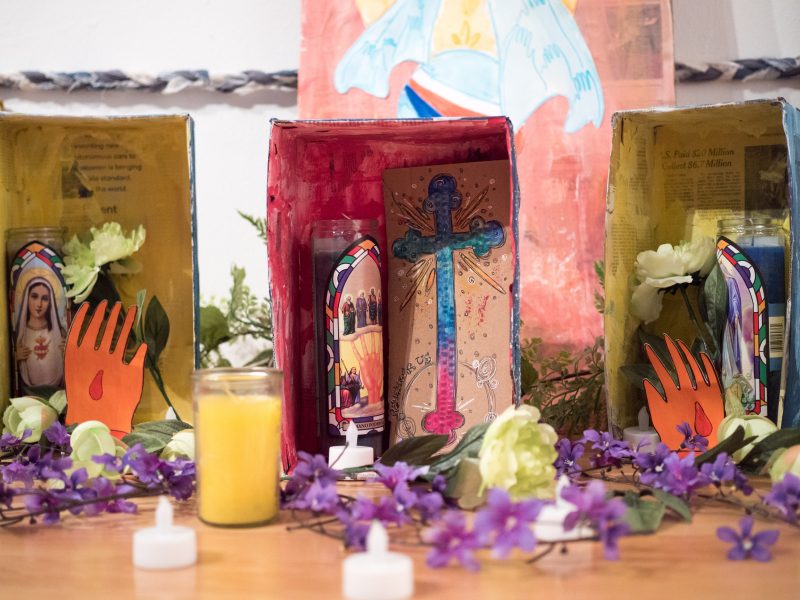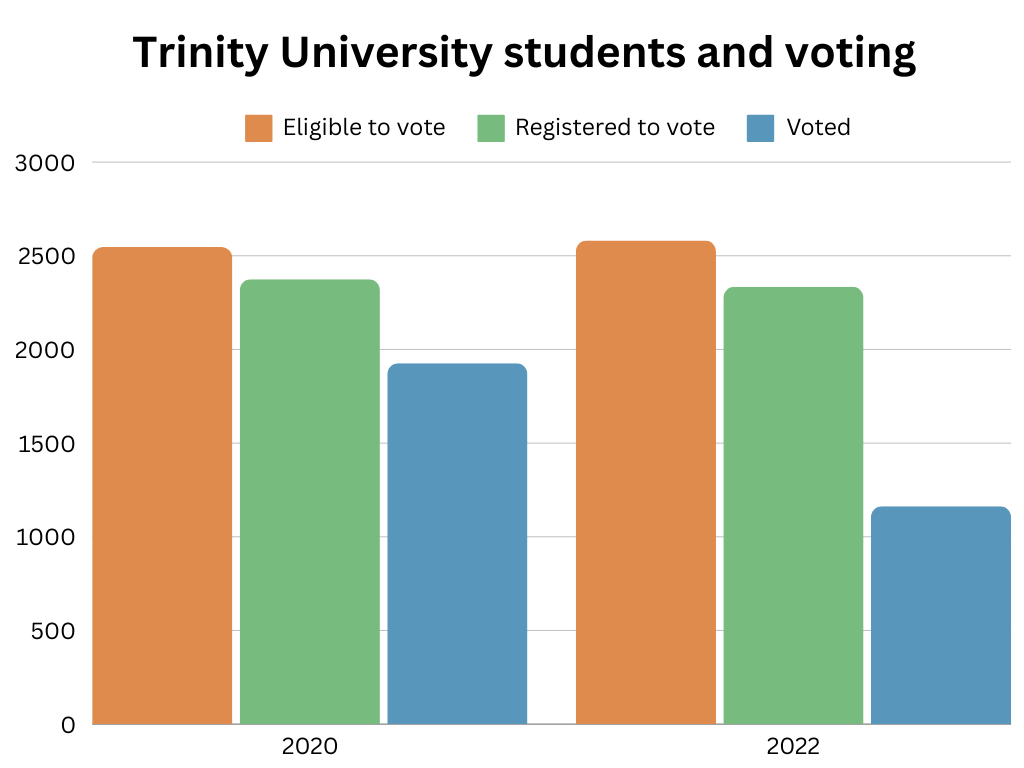Co-signed by Ariel del Vecchio.
Ariel del Vecchio and I are presenting a mixed media installation piece titled “Constructed Religiosity” at the Mini, a student art exhibition in Trinity’s own Neidorff Gallery. Our work has already garnered ire from a fellow art student, despite the fact that our critic weighed in before the work and our artist statements were made available to the public. Here, we’re answering the questions she never asked us.
An argument of identity politics and authenticity has been made, ignoring the previous work and decontextualizing the lived experiences of the artists. We have been labeled white feminists. We have been told we are mocking practicing Catholics.
Ariel is a practicing Catholic, a gay woman, a Paraguayan deeply connected to her indigenous Guarani heritage and an immigrant to this country.
I, the lesbian daughter of a southern Methodist minister, am privileged to have supportive parents, but I have experienced disinheritance, excommunication, public humiliation and familial abandonment for my sexuality.
The fact that we have to publicly air these traumatic life experiences to prove the authenticity of our work is antithetical to the projected argument of identity politics.
Our concept is that of a roadside memorial, something you would see at a busy intersection or highway anywhere in the United States, Latin America or Ariel’s home country of Paraguay. The Virgin figure we utilized is that of the Paraguayan marian apparition of La Virgen de Ka’akupe.
Religious candles and prayer cards were co-opted from religious practices, used in the religious traditions of both artists, to exalt our experiences with sexuality. The use of recycled materials was a deliberate choice made to highlight the lack of resources available to people like us in creating welcoming religious spaces.
Our piece has been accused of singularly glorifying white queer women, which is a dangerous missrepresentation. We discuss diverse queer women throughout history, more than half of whom are women of color.
We have been accused of cultural appropriation, which is wholly reductive and reflects a genuine inability to engage with what our work truly means.
Contemporary conversations surrounding cultural appropriation are deeply tied into claims of authenticity made through superficial identity politics. The argument identifies the aesthetic of our installation as singularly Mexican, and a blasphemous misappropriation of Catholic imagery.
Culture is neither static nor biologically authenticated. This argument against our work is predicated on an assertion that culture, cultural practices and cultural experiences have hard boundaries and that exchange, influence and convergence are morally reprehensible.
Look back through the iconographic and devotional history of the Catholic church and see that many traditions have their inception in the Baroque counter-reformation project of individual religious experience. The presence of small-scale altars are a large part of the extensive history of Catholicism, and devotional material dedicated to marian apparitions in particular are important parts of Catholic traditions in all of Latin America, not just Mexico.
Spanish colonialism in Latin America led to the forced conversion of the indigenous people to Catholicism and, in many ways, the indigeneity of marian apparitions like La Virgen de Ka’akupe allow Latin Americans to continue to engage with their complicated racial and ethnic history. A search for votive altars in worship of La Virgen de Cococabana, La Virgen de Lujan, and La Virgen de Suyapa will present images of votive statues surrounded by traditional decorations represented throughout Latin America.
Personal experience of culture does not explain a culture in its totality, nor who it belongs to, nor its geographic and biological limitations.
The argument of cultural appropriation against our work erases a long history of devotion of the Virgin Mary throughout the rest of Latin America and our personal religious experiences. It is an argument of reactionary ethno-nationalism and it is blindly exclusionary.
In sum: Yes, we are critiquing church and culture. No, we are not hipsters or yuppies. No, we are not straight white women romanticizing someone else’s pain for artistic merits.
We are speaking from deeply personal experiences as non-heterosexual women and a woman of color. We put hard work and harder theoretical and historical context into this work. Yes, see other work by LGBTQ+ people of color.
But do not weaponize identity politics. Do not weaponize authenticity. It’s not fair, fun or realistic if we aim to enter into open and honest conversations with each other about the similarities and differences of our lived experiences.







Anonymous • Feb 15, 2018 at 11:51 pm
I really liked yall’s piece but I would like to point out that Paraguayan art is very different than the art that you both created. There is a large Mexican community in San Antonio and it is natural for them to be offended, especially since the highway fence looks like Trump’s Wall, even though I know that was not your intent. This does bot make your art wrong or a bad piece in any way, it is just that you should tread carefully when using well respected religious idols and cultural traditions within your work.